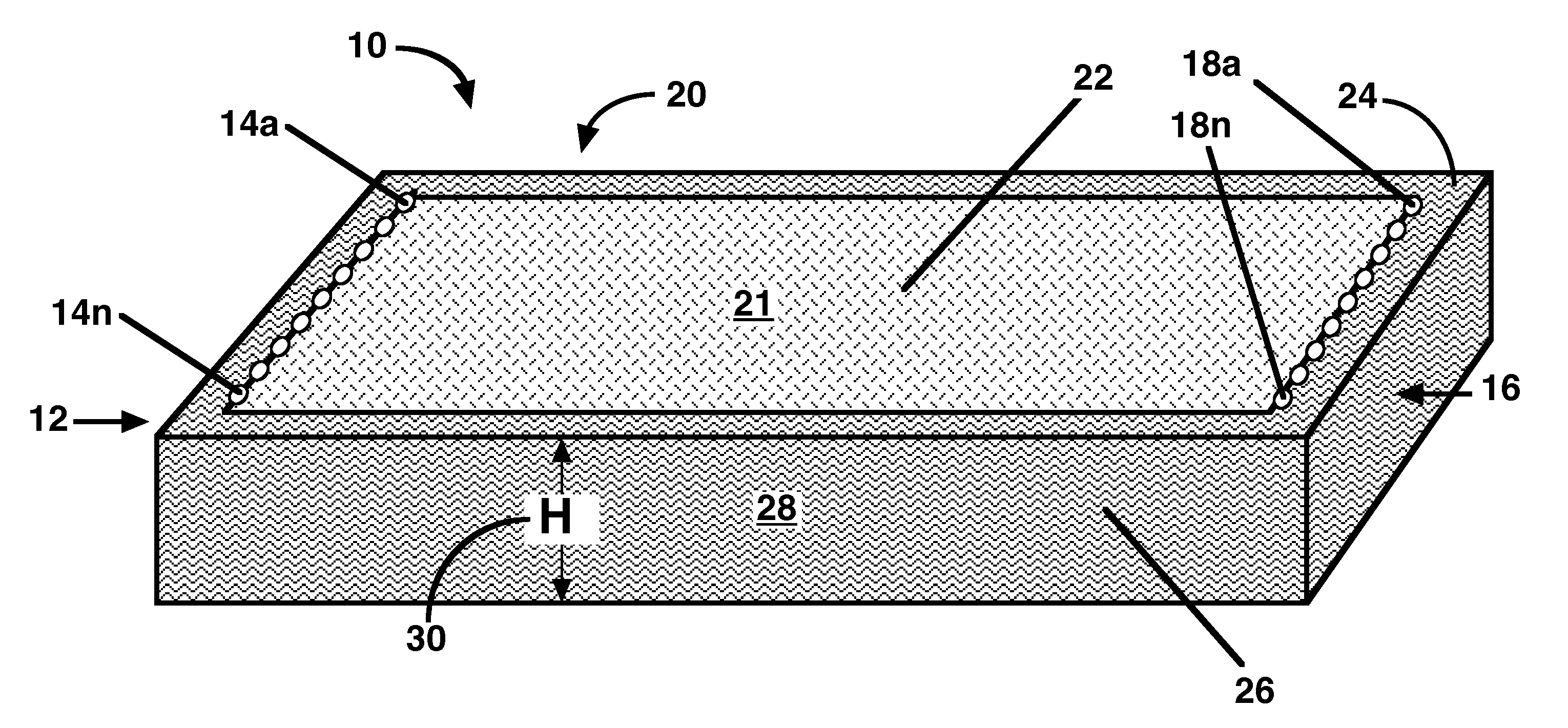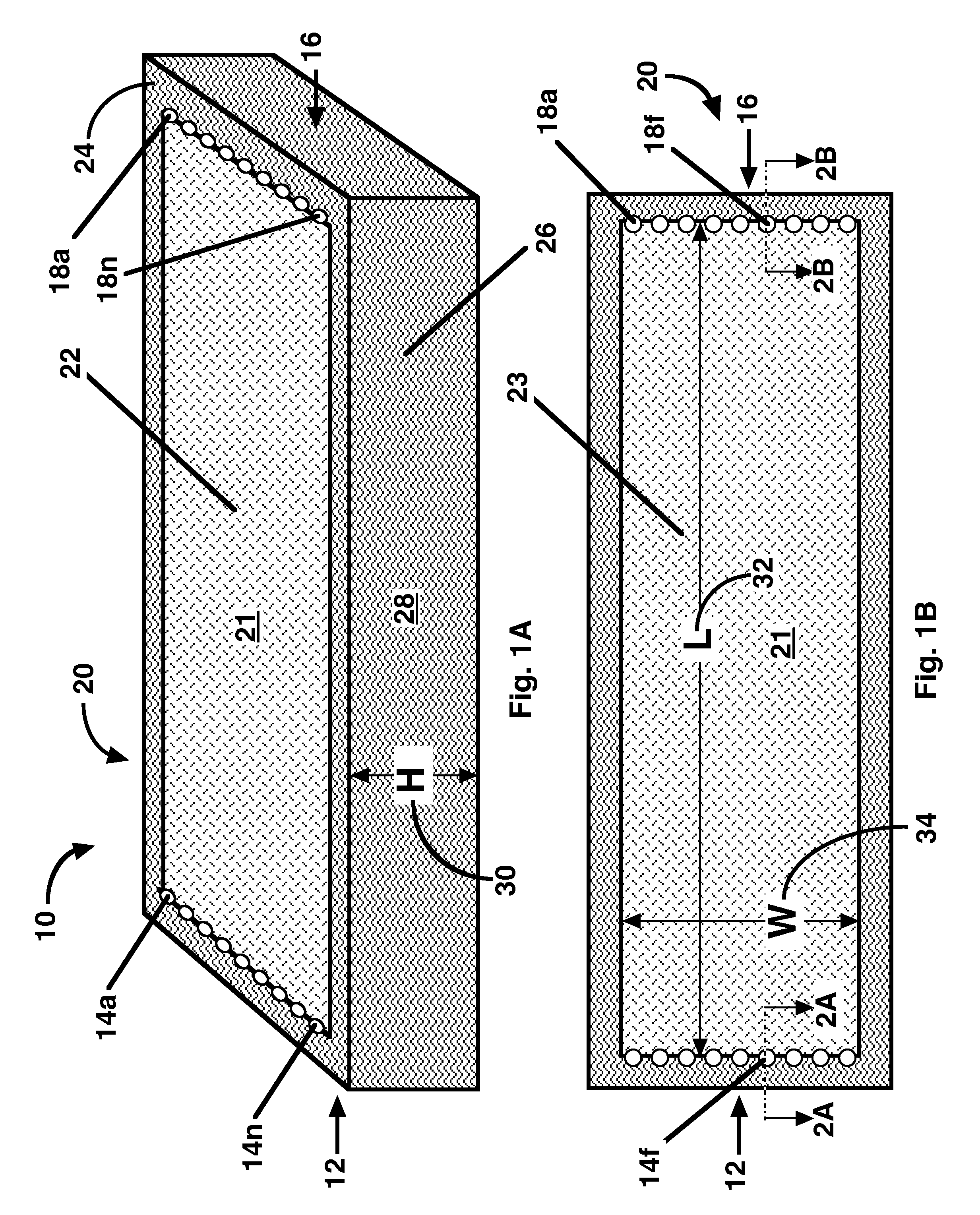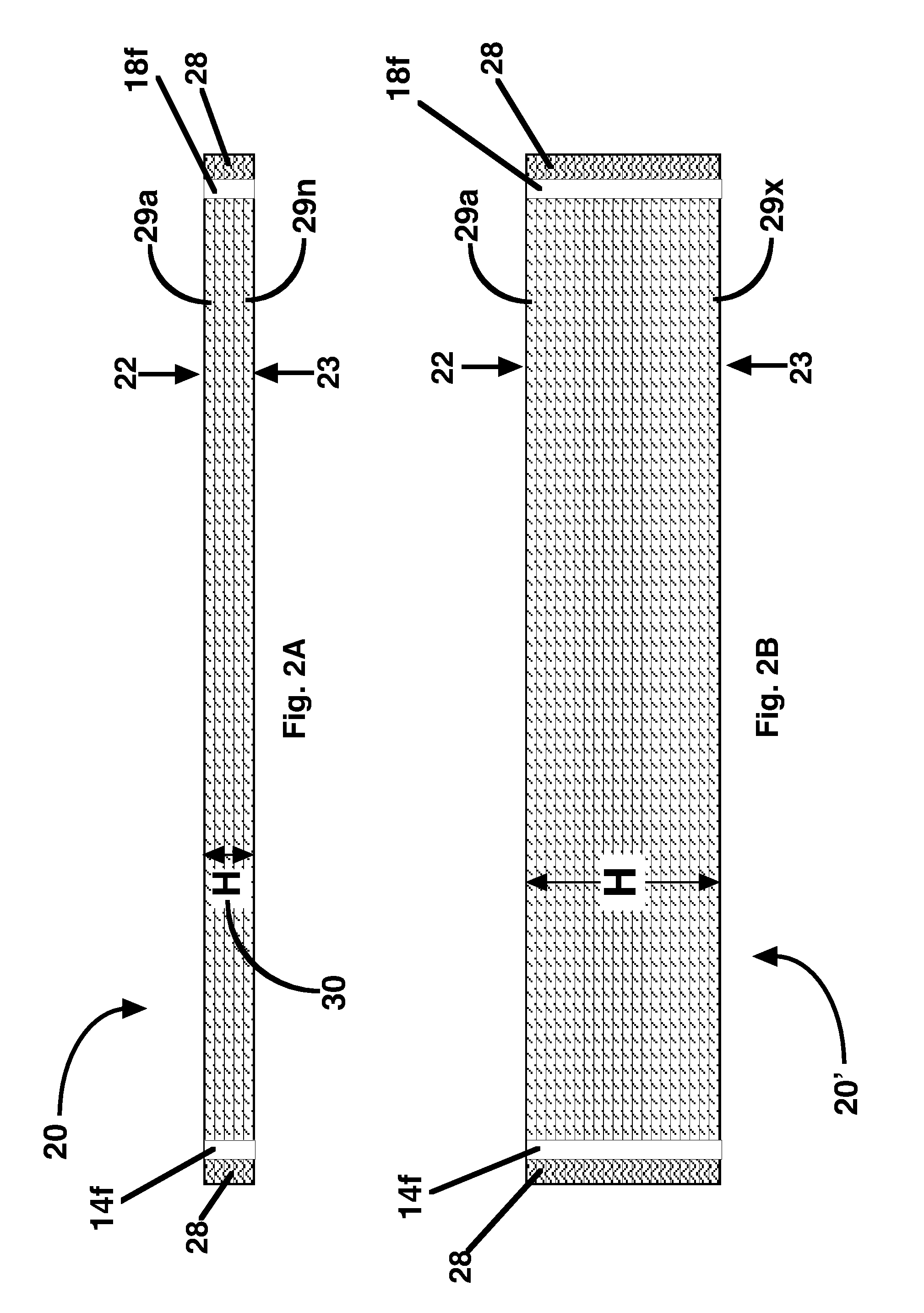Stackable planar adsorptive devices
a planar and adsorption technology, applied in the field of absorption devices and processes, can solve the problems of limiting the number of layers that can be stacked, limiting the scalability of existing membrane adsorbers, and limiting the capacity of existing membrane adsorbers, and achieves significant fabrication and structural benefits. , the effect of high beads capacity
- Summary
- Abstract
- Description
- Claims
- Application Information
AI Technical Summary
Benefits of technology
Problems solved by technology
Method used
Image
Examples
Embodiment Construction
[0032]This invention specifically relates to devices and processes suitable for preparative and manufacturing processes, and more specifically to processes used in the manufacture in the pharmaceutical industry for the production of medicinal or therapeutic products.
[0033]In contrast to conventional devices, applicants have discovered a way to support adsorptive media in a configuration that is linearly scalable and self supporting. Embodiments of the invention utilize planarly cohesive media. A web of adsorptive media, as for example, Macro-IPN media, is planarly cohesive. The media retains its shape even when pulled apart by a tensile force. A monolith is also planarly cohesive, except that it is much thicker than a bed. The cohesion plane of planarly cohesive media is oriented in parallel to the planar surfaces of the adsorptive device. The cohesiveness of the media along the cohesion plane enables the fabrication of adsorptive media blocks as described below.
[0034]The term adsor...
PUM
 Login to View More
Login to View More Abstract
Description
Claims
Application Information
 Login to View More
Login to View More - R&D
- Intellectual Property
- Life Sciences
- Materials
- Tech Scout
- Unparalleled Data Quality
- Higher Quality Content
- 60% Fewer Hallucinations
Browse by: Latest US Patents, China's latest patents, Technical Efficacy Thesaurus, Application Domain, Technology Topic, Popular Technical Reports.
© 2025 PatSnap. All rights reserved.Legal|Privacy policy|Modern Slavery Act Transparency Statement|Sitemap|About US| Contact US: help@patsnap.com



